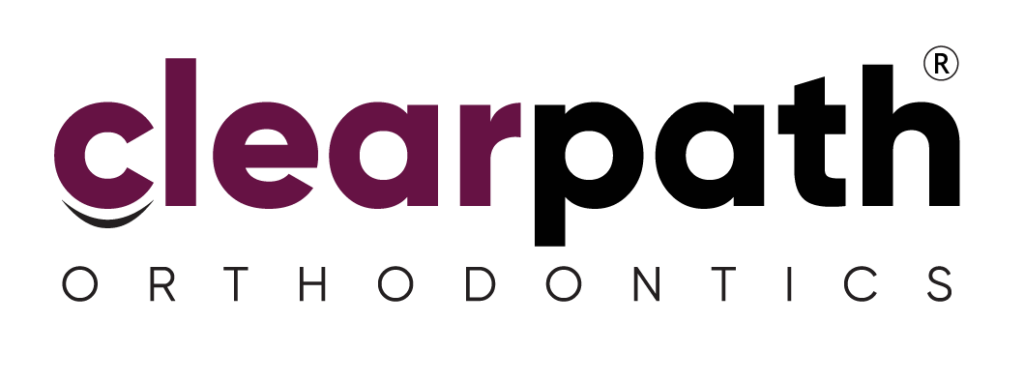Inherited Misalignment?
Clear Aligners Make It Right
Can Genetics Cause Crooked Misalignment?
If you’ve ever wondered, “Are crooked teeth inherited?” the answer is often yes. Genetics can play a significant role in how our teeth and jaws develop. From jaw size to tooth spacing and even bite alignment, these traits can be passed down from generation to generation. So if your parents or siblings have crooked teeth, there’s a good chance your genetics played a part in yours, too.
At ClearPath Orthodontics, we see many cases where genetics and tooth alignment are clearly linked, but fortunately, they can be successfully treated using our advanced digital clear aligners.
How Genes Affect Teeth Alignment
Genetics and Tooth Alignment – What the Research Shows
Research confirms that the role of genetics in malocclusion (misalignment of teeth or bite) is well-established. According to clinical studies, factors such as:
Jaw size and shape
Tooth-to-jaw size mismatch
Extra or missing teeth
Delayed eruption patterns
…are often inherited. These factors can result in crowded, gapped, or crooked teeth — even when a patient has practiced good oral hygiene.
Genetics doesn’t just affect how your teeth look; it also shapes your bite — leading to hereditary overbites, underbites, or open bites. Families often share similar smile patterns, making orthodontic evaluation a smart idea for children and adults alike.
Are Crooked Teeth Genetic? Common Examples
Let’s break down some common examples of genetic misalignment:
Overbite or underbite: Often passed from parent to child due to inherited jaw structure.
Crowded teeth: When your jaw is too small to accommodate all teeth — a common hereditary trait.
Gaps between teeth: Can also be inherited if your teeth are small or spaced out relative to jaw size.
Impacted or extra teeth: These conditions can affect alignment and are typically genetic in origin.
So, can genetics cause crooked teeth? Absolutely — but that doesn’t mean you’re stuck with them.
Beyond Genetics: Other Causes of Misalignment
While genetics crooked teeth cases are common, they’re not the whole story. Environment, habits, and health all contribute too.
Poor Oral Habits, Trauma, and Jaw Growth
In many patients, misalignment is caused or worsened by:
-
Thumb-sucking or pacifier use beyond age 3
-
Mouth breathing
-
Injury to the face or jaw
-
Early or late loss of baby teeth
-
Tongue thrusting or speech-related habits
Even in genetically predisposed individuals, these factors can intensify misalignment. That’s why a holistic assessment, like the one provided at clearpathortho.com, is essential.
How ClearPath Orthodontics Addresses Genetic Misalignment
ClearPath Orthodontics is Pakistan’s leading provider of FDA-certified clear aligners — manufactured locally in Lahore using world-class digital technology. Our approach to genetics misaligned teeth is precise, personalized, and proven.
Advanced Clear Aligners for Hereditary Crowding
Using a full digital workflow, we:
-
Capture a 3D scan of your teeth (no messy molds)
-
Simulate your entire smile journey using AI-based software
-
Manufacture custom aligners for each stage of tooth movement
-
Offer remote monitoring for added convenience
This modern approach ensures higher accuracy, faster results, and minimal clinic visits — ideal for busy adult lifestyles or young patients needing early correction.
Clear Aligners vs Braces for Genetic Misalignment
When it comes to genetics orthodontics, both braces and aligners are viable — but aligners offer:
| Feature | Clear Aligners | Braces |
|---|---|---|
| Aesthetics | Nearly invisible | Highly visible |
| Comfort | Smooth, no wires | Metal brackets may irritate |
| Convenience | Removable | Fixed |
| Hygiene | Easy to brush and floss | Requires careful cleaning |
| Monitoring | Can be tracked digitally | In-person visits needed |
At ClearPath, we tailor the solution based on your clinical case and personal preference — always putting your comfort and results first.
Read More: Clear Aligner Travel Hacks for People on the Go
What to Expect if You Inherit Crooked Teeth
When to Start Treatment
A common question is: “What’s the best age to treat genetic misalignment?”
Children (Age 7–10): Ideal for early intervention if jaw growth needs guidance
Teens (11–17): Prime time for full orthodontic correction
Adults (18+): It’s never too late — our adult patients see amazing results using ClearPath aligners
No matter your age, we can plan a treatment path that fits your lifestyle. At ClearPath, age is not a barrier — only untreated genetics are.
Final Thoughts: Genetics Isn’t Destiny — Treatment Starts Here
If you’ve inherited crooked teeth, you’re not alone — and you’re not without options. With ClearPath Orthodontics, treating genetic misalignment has never been more precise, convenient, or discreet.
Whether you’re a parent planning ahead or an adult finally ready to fix a lifelong concern, our clear aligners deliver results backed by science — and driven by innovation.
👉 Book your free consultation today at ClearPath Orthodontics in Lahore and take the first step toward a genetically smarter smile.
FAQs
Can genetics cause misaligned teeth?
Are crooked teeth inherited?
Frequently, yes. Many cases of crooked teeth run in families due to shared structural traits.
Is tooth misalignment hereditary?
Absolutely. Research shows that genetics play a large role in malocclusion, particularly when combined with external habits or early trauma.
What treatments work for genetic misalignment?
ClearPath’s clear aligners and custom braces are both effective. For mild to moderate hereditary issues, our 3D aligner system is often the preferred choice.
